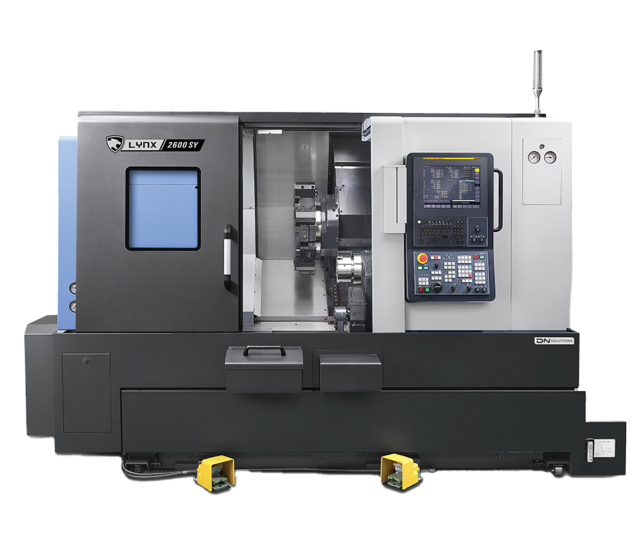FAQ Section
What types of parts is the Lynx 2600Y best suited for?
The 2600Y is ideal for components that require both turning and milling in one operation. Examples include flanged shafts, aerospace fittings, medical couplings, and hydraulic housings with milled flats, off-center holes, or radial slots. Its Y-axis and live tooling eliminate the need for secondary operations, making it highly efficient for complex part manufacturing.
Can the Lynx 2600Y replace a machining center?
In many cases, yes. For parts that involve light-to-moderate milling or drilling features in addition to turning, the 2600Y’s Y-axis, C-axis, and live tooling allow you to complete the job in a single setup—eliminating the need to transfer to a VMC or HMC. This significantly reduces setup time, improves part consistency, and boosts throughput.
How does the Y-axis differ from standard 2-axis lathes?
Traditional 2-axis lathes can only move the tool in X and Z directions. The Y-axis adds vertical movement, enabling off-center milling, drilling, and slotting. This unlocks more complex geometries and lets you finish parts that otherwise require multi-machine setups.
Is the Lynx 2600Y compatible with automation?
Yes. The machine is designed with automation in mind and includes standard features like a part catcher and optional interfaces for barfeeders, robots, and conveyors. It’s often used in lights-out or unmanned machining environments due to its reliability and smart monitoring features.
What’s the difference between the Lynx 2600Y and 2600SY?
The primary difference is the presence of a sub-spindle on the 2600SY, which allows back-side machining and part transfer for full 6-sided work. The 2600Y offers Y-axis machining on the front spindle only but shares the same turret, travel, and power specs—making it ideal for high-precision front-side part production without requiring a second spindle.

